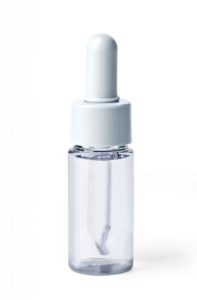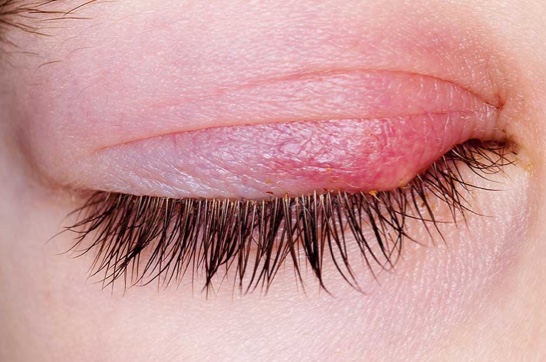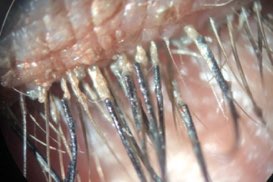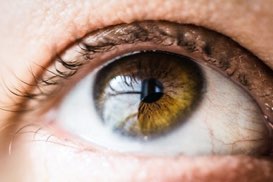Once your environmental allergies are specifically identified a completely customized, targeted treatment plan can be created individually for you.
The first line of therapy is education and avoidance of your allergens.
Education: Dr. Muller and her staff place a huge emphasis on education. They spend a lot of time explaining your diagnosis, treatment options, and what you can do to have the healthiest, most comfortable eyes and eyelids, and maintain your best vision, always.
The second line of therapy is aimed at decreasing your symptoms and the inflammation associated with your allergies.
For allergy symptoms that affect your eyes (i.e. red eyes, itchy eyes, tearing, puffy eyelids, dark circles under your eyes, etc.) you may be instructed to use artificial tears, prescription antihistamine eye drops, cold gel packs, etc. You should not take antihistamine tablets by mouth, especially if you have dry eye, as antihistamines by mouth exacerbate your dryness (from head to toe) as a side effect.
If you have symptoms involving your nose and throat (i.e. a runny nose, sneezing, scratchy throat, sore throat, cough, headaches, tiredness, lethargy, sinus congestion, sinusitis, post-nasal drip, etc.) you may be instructed to use various natural, over the counter products, such as Arm and Hammer Simply Saline Nasal Mist, and/or antihistamine nasal sprays. Decongestant nasal sprays such as Afrin and Sinex should not be used for more than 2 or 3 days to avoid a rebound effect. Again, it is recommended that you refrain from taking antihistamine tablets by mouth because of their drying effect.
The third line of therapy for allergies (and associated medical conditions such as asthma, eczema, postnasal drip and sinusitis) is immunotherapy.
Immunotherapy has been used for decades in the United States and extensively all over the world. There are several ways to administer immunotherapy: subcutaneously, as weekly allergy shots, or by placing drops or tablets under your tongue, known as sublingual immunotherapy, or SLIT.
With allergy shots, the allergens to which you are allergic are mixed together, placed in a syringe and administered as an injection given once each week in a doctor’s office.
With custom sublingual immunotherapy (SLIT) drops the same group of allergens is mixed together, but instead of putting the mixture into a syringe, the solution is placed into a small bottle (very similar to a bottle of eye drops). This bottle is given to you, along with clear instructions for placing a couple of drops under your tongue once a day in the convenience of your own home; no needles, no weekly doctor’s appointments.
Immunotherapy consists of two phases: the escalation phase and the maintenance phase. The escalation phase typically takes ten to twelve months, and the maintenance phase typically takes about twenty four months.
 Custom sublingual immunotherapy is safer, more convenient and more comfortable than weekly shots which has been shown to significantly enhance compliance.
Custom sublingual immunotherapy is safer, more convenient and more comfortable than weekly shots which has been shown to significantly enhance compliance.
Our patients are benefiting greatly from being successfully desensitized using custom sublingual immunotherapy (SLIT) drops.
Immunotherapy is intended to reduce or eliminate your allergy symptoms, associated medical conditions and their symptoms, and your need to take medication. Immunotherapy works by desensitizing you, or recalibrating your immune system by exposing your immune system, in a slow and controlled way, to increasing dosages of your allergens. By doing this, your body learns tolerance and won’t have the same allergic inflammatory reaction upon future exposure to your allergens.
Custom sublingual immunotherapy in drop form has been used throughout Europe and Asia for decades and has been proven to be both safe and effective.
Sublingual immunotherapy drops are a natural, homeopathic way to treat your allergies and can be more cost effective than allergy shots or taking allergy medications. For allergy shots, the cost of the weekly doctor’s appointment typically involves a copay with or without coinsurance and a deductible, time away from work, transportation costs, etc. The cost associated with medication for symptomatic relief of your allergies can add up over the course of years and the ongoing use of these medications is simply not healthy.
The goal of sublingual immunotherapy drops is the long-term reduction or elimination of the inflammation caused by your allergies, the improvement in associated medical conditions, and the reduction of your need to take medications.
Much of the morbidity associated with untreated, or under-treated, environmental allergies can be prevented with proper diagnosis and treatment.
It is not uncommon for medical treatments to be used in an "off label" way. Sublingual Immunotherapy (SLIT) drops are an example of an FDA approved treatment being used “off label” *. Please read the explanation below.
* The FDA Process and the Term "Off Label" Explained:
In order for a drug, or a treatment, to be FDA approved a company must submit clinical data and other information to the FDA for review. The company must show that the drug or treatment is safe and effective for its intended use.
When a drug is approved by the FDA it is typically approved with specific directions regarding its dosage (i.e. 10 mg), frequency (i.e. twice a day), and how it should be administered (i.e. by injection, mouth, inhalation, other). Simply changing the directions as to how a patient should take the drug constitutes an “off label” use of an FDA approved treatment.
Once the FDA approves a drug a physician can prescribe it with different instructions in an “off label” way if the physician feels it’s medically appropriate for his/her patient.
Examples of an “off label” use of an FDA approved drug are:
- Prescribing a different frequency of dosing: such as when a drug is FDA approved at a frequency of dosing of 2 tablets twice each day, but a patient is instructed by his/her physician to simply take 1 tablet twice each day.
- Prescribing a different dosage of a drug: such as when a drug is FDA approved at a dosage of 10 mg/day, but a patient is instructed by his/her physician to simply take 5 mg/day.
There are three ways to administer immunotherapy for the treatment of environmental allergies:
Sublingual Immunotherapy Tablets: With sublingual immunotherapy (SLIT) using tablets, the tablets containing a pre-set mix of allergens are placed under your tongue. This form of immunotherapy cannot easily be customized to an individual's specific needs and is limited to use with some grasses, dust and ragweed. This sublingual mode of administration of immunotherapy is FDA approved.
Allergy Shots: With this form of immunotherapy, you receive weekly allergy shots in which liquid allergens are placed in a syringe and given as an injection. This form of immunotherapy allows for individual customization. The injection of these liquid allergens is FDA approved.
Custom Sublingual Immunotherapy Drops (liquid): Sublingual immunotherapy (SLIT) using liquid/drops placed under your tongue. This approach combines the best aspects of both of the aforementioned treatments: the FDA approved sublingual route of administration and the FDA approved liquid allergens used for allergy shots.
Sublingual immunotherapy (SLIT) using drops simply uses the same FDA approved allergens in liquid form which are used to give weekly allergy shots, however, instead of placing the solution in a syringe and giving you an injection, the liquid allergens are placed in a bottle and given to you with directions to place a couple of drops underneath your tongue once a day in the convenience of your own home. This change in the route of administration of the liquid allergens from an injection (across your skin) to transmucosally** (across the mucous membranes under your tongue) constitutes an "off label" use of this treatment.
In Summary: This simple change in the way the FDA approved liquid allergens are now placed under your tongue (also an FDA approved mode of administration), instead of in a syringe and injected, changes sublingual immunotherapy (SLIT) using drops placed under your tongue to an “off label” treatment.
**Transmucosal refers to the route of administration of a drug across a mucosal membrane (i.e. under the tongue, inhalation, nasal passages, etc.).
Additional Natural Allergy Treatments:
Probiotics: Research shows that probiotics help reduce allergy symptoms.
Cold Gel Packs: Applying cold gel packs to your itchy, irritated eyes relieves inflammation and helps you feel better and look better by decreasing the redness and puffiness. Cold gel packs can also reduce the appearance of dark circles under/around your eyes by constricting the blood vessels surrounding your eyes.
Wrap around glasses and sunglasses: for protection against environmental elements such as wind, UV, allergens, etc.
To reduce sinus congestion secondary to environmental allergies:
- Use "Simply Saline Nasal Mist from Arm and Hammer" to rinse out your nasal passages.
- Breathe Right Nasal Strips
- Nasal/Sinus irrigation using a Neti pot, or a specially designed squeeze bottle, to flush out thickened mucus and irritants from your nose. Use water that’s distilled, sterile, previously boiled and cooled, or filtered using a filter with an absolute pore size of 1 micron, or smaller, to make up the irrigation solution. Be sure to clean the irrigation device properly after each use and leave open to air dry. Note, improper use of a Neti pot, or other device, can lead to infection.
To reduce allergy symptoms from indoor allergens:
- Reduce your exposure to dust mites and pet dander by frequently washing bedding and frequently washing (or eliminating) stuffed toys in hot water, regularly using a vacuum with a fine filter such as a high-efficiency particulate air (HEPA) filter and replacing carpeting with hard flooring.
- Keep pets off of your bed and furniture.
- Use hypoallergenic encasements (pillow, mattress, box spring covers, etc.).
- Install furnace filters and sleep with a HEPA filter next to your bed.
- For additional information regarding reducing dust mites: https://ohsospotless.com/getting-rid-of-dust-mites/
To reduce allergy symptoms from mold:
- Reduce moisture in damp areas, such as your bathroom and kitchen, by using ventilation fans and dehumidifiers. Fix leaks inside and outside your home.
To reduce allergy symptoms from pollen:
- Pollen counts are highest in the early part of the day, therefore, plan to spend time out of doors in the latter part of the day.
- Take your clothes off and place them in the laundry upon entering your home (so you don't bring the pollen in with you). Shower and wash your hair to decrease pollen loads.
- Stay indoors with the windows closed and the air conditioning on on days when pollen counts are high.
Treatment of Eczema Involving the Eyelids:
Eczema of the eyelids can successfully be treated using a variety of modalities ranging from natural, such as gentle moisturizers or organic cold pressed castor oil, to calcineurin inhibitors including Restasis and Tacrolimus drops or ointment, to mild ophthalmic steroid ointment, or Dupixent.
This is another area Dr. Muller specializes in.








